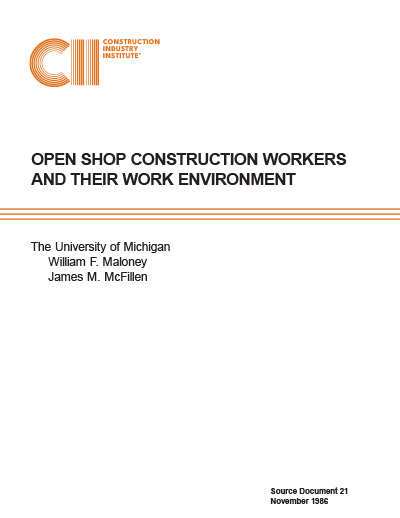
Substance Abuse: The Problem and Its Solution
This was a study of substance abuse in the construction industry sponsored by the Construction Industry Institute. The primary objective of the study was to determine the extent of the substance abuse problem in the construction industry and what is being done to solve the problem.
Substance abuse is perceived to be a significant problem within the construction industry. Approximately 10–15% of the people in the construction side of the industry are perceived by contractors, labor officials, and owners as having a substance abuse problem. Design officials believe the percentage is much lower for design personnel. The substance abuse problem has a significant cost impact. Overall costs are estimated to be 6.5–8.5% higher because of substance abuse. Health care, workers’ compensation, and other insurance costs are significantly higher because of substance abuse. Absenteeism, late starts, early quits, safety incidents, accidents, injuries, and turnover are all higher while productivity is significantly lower because of substance abuse.
While expressing the belief that substance abuse is a problem for the construction industry, many of the respondents indicated that substance abuse is not a problem for their organization. Consequently, there has not been a great deal of activity to solve the problem. This is not to say that organizations are not dealing with the problem. It is simply saying that there is much to be done. Examples of what organizations are doing is provided in the Appendix C.
Most of the discussion of substance abuse is focused on the use of illegal drugs, especially cocaine and marijuana. Although many people do not consider it a drug, the most abused drug is alcohol, by a significant margin. Much more attention and effort must be directed to solving the alcohol abuse problem.



